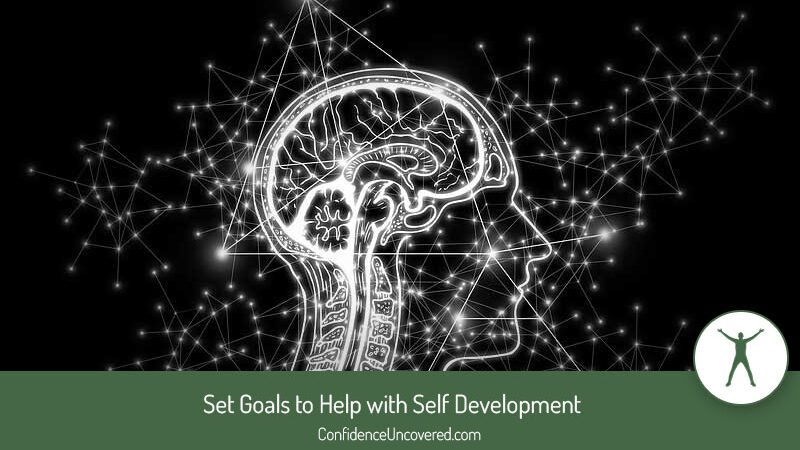10 Easy Ways to get from your Comfort Zone to Your Learning Zone

Why step out of your Comfort Zone?
 Your Comfort Zone is a safe space. Somewhere you can relax.
Your Comfort Zone is a safe space. Somewhere you can relax.
But it’s also a boring place. A place where your confidence is never tested, so never needs to grow.
In your Comfort Zone, nothing new is ever learned, and there are no new pleasures to experience.
In this article, you’ll discover ways to step outside of your Comfort Zone and build that confidence you’re dreaming of having.
The area outside your Comfort Zone
I look at the area immediately surrounding my comfort zone as having two sections:
The first section, is what I call my ‘Learning Zone‘.
This is the section where I’m going to be doing something that’s uncomfortable, but I know the benefits will be worth it. So, I’m going to accept the increase in stress and anxiety, because I can see how the experience will help me.
Alongside my Learning Zone, is what I call my ‘Pointless Zone‘.
This is the section where I’m doing something, just so that I can say it scared me, but I did it anyway.
Experiences in this Pointless Zone don’t have any real transferable benefit for me. Sometimes, if it’s for a good cause, it’s still worth doing though.
Those things aren’t for this article.
Stepping into your Learning Zone is the best way to move out of your Comfort Zone.
How moving from your comfort zone, to your learning zone, can increase your self confidence?
 When you’re willing to try new things, you become more confident to try something else that’s new.
When you’re willing to try new things, you become more confident to try something else that’s new.
And, as that confidence grows, the anxiety around trying new things becomes less.
Although, getting yourself out of your current pattern, means you’ll have to make some small changes.
So, we’re going to look at why you should do it and simple ways you can start, without creating too much stress.
Why you should step outside your comfort zone
I’ve spoken before about the huge benefits you get, when you step outside of your comfort zone. As well as increasing your experiences, every time you do something new, your confidence in your other abilities grows as well.
For most people, including me, stepping outside of what’s comfortable and safe, can be scary. After all, Humans are designed to stay away from things that might cause pain, and that includes anxiety.
As Tony Robbins says… “The need to avoid pain and seek pleasure drives everything we do. And people will do more to avoid pain than they will do to gain pleasure.”
 Quite often, when we’re thinking about trying something new, we imagine that the results of failure will be devastating. Although, in reality it’s very unlikely to be that bad.
Quite often, when we’re thinking about trying something new, we imagine that the results of failure will be devastating. Although, in reality it’s very unlikely to be that bad.
Obviously, with some experiences, pain could be a possibility. In most cases though, the results of failure are more likely to be a dent in your pride.
So, the next time you’re in a position to step outside of your comfort zone, here’s a tip. Simply re-frame your doubt, by asking the simple question….
“What really, is the worst that’s likely to happen?”
And although that sounds like a simple question, it breaks your automatic response. Now, you’re free to actually think about how that experience could benefit you.
10 ways to move out of your Comfort Zone and into your Learning Zone
There are so many simple ways to move from your Comfort Zone to your Learning Zone. Here are just 10 of them…
1. Say Hello:
Every person you walk past today, give a smile and say “Good morning”. Most people will return it. One of the most difficult things for someone with low self-confidence to do, is talk to a stranger. This small exercise helps with that.
2. Answer a call from an unknown number:
I used to be scared to answer the telephone if I didn’t know who was calling. Unsurprisingly, once I started answering, none of the callers meant me any harm!
3. Call in on an elderly neighbor:
Take a few moments to ask your neighbor if they need anything. They’ll be grateful that you thought of them and you’ll feel good too. It’s win-win.
4. Speak to a co-worker:
Strike up a conversation with a co-worker from a different department. If you don’t have the courage yet to approach a stranger, try this modification first. At least you’ll know you have something in common.
5. Leave your mark:
Leave a comment on a web site you visit. (Why not start here 😉 ) This is an easy one to start with. If you don’t know what to say, just say something nice.
6. Pay someone a compliment:
You’ll make that person feel good and it’ll brighten your day too.
7. Be spontaneous:
Say yes to the next thing a friend asks you to do, even if it makes you a bit uncomfortable. Obviously, you should follow your common sense with this one. But most requests are going to be painless and could be quite a lot of fun 🙂
8. Ask a stranger for a recommendation:
If you’re in a restaurant, or bar for example, ask your server to recommend something. This is another option to help you start speaking to strangers. Also, the people you speak to are expecting it, so there’s no added stress.
9. Eat on your own:
Dining out isn’t just a social activity. It used to be that if you went to a restaurant on your own, you clearly had no friends. That’s not the case anymore and it can be quite empowering.
10. Volunteer:
Volunteer for a few hours a week. Help out at a charity shop, or local hospital, etc. Helping other people gives you the greatest feeling of satisfaction. Plus, you’ll be around new people who can quickly become new friends.
Be prepared
Even when you really want to move outside of your comfort zone, actually doing it can sometimes be a struggle at first.
So, here’s a few ways to make the first step a bit easier.
Examine your reasons
If you have good reasons for trying new things, taking that first step will be easier.
- Remind yourself why you want to have new experiences. Write down all of the reasons you have for wanting to experience new things. Whether that’s goals, aspirations, or just enjoying new experiences.
- Ask yourself what it feels like to live within your comfort zone. Write down all the negative aspects of your current situation and how they make you feel.
Be informed
The more you know about a new challenge, the less scary it may seem. So, before you go out to try something new, do some research and learn the facts. Then, you’ll have clearer expectations and better knowledge as you prepare to handle the task.
- Look for relevant articles online.
- Read books about the subject.
- Talk to experts, or at least people who’ve done it before..
Be willing to fail
In the beginning, you should probably try new things, where failing isn’t too much of a problem. Almost all of the ideas written above leave you with very little to lose if they don’t go the way you planned.
If you try to stretch yourself too much and it doesn’t work out, you might not try anything new again. So start small and build up to the bigger stretches later.
The power of three
Always try to do things three times before you decide something isn’t worth the anxiety.
- The first time, it’s new, you don’t know what to expect and you might not have the best experience.
- The second time, you know nothing bad is going to happen but you might still have questions about it’s benefits.
- By the third try, you’re in a better position to make a judgment about whether it’s something you want to continue.
Final words
- If you’re thinking of declining a new experience, consider “what’s the worst that can happen?” Then ask, “what will this experience give me?”
- Once you’re clear on the most likely bad outcome. And you’ve identified the benefits, you can make an educated judgement about whether, or not to try it.
- By identifying the actual possible outcomes, you’ll feel calmer about doing the activity. And sometimes, you might even decide to do something that could possibly be dangerous 🫣
- Take small steps. Don’t go straight into something that’s bigger than you can accept failure at. They’ll be time for that later!
- Try everything at least 3 times before you decide to stop for good.
All that’s left now is to make a start towards living your best life. Try it out, then let me know how you got on.




